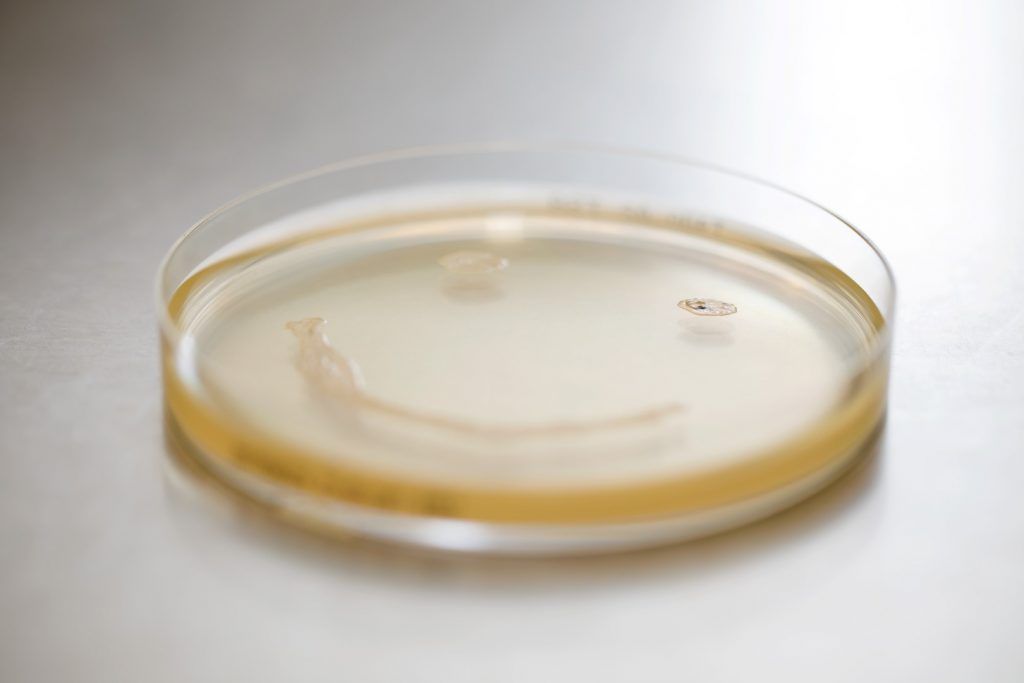The Avans University of Applied Sciences in Breda collaborated with BaseClear in an Enabling Technology Hotel (ETH) project for the whole genome sequencing of colistin-resistant bacteria. By combining short-read (Illumina) and long-read (Nanopore) sequencing technologies, the partners succeeded in revealing the sequence of the colistin-resistance genes and its exact location on bacterial plasmids.
 Enabling Technology Hotel program
Enabling Technology Hotel program
BaseClear is an approved DTL Technology hotel for the Enabling Technology Hotel (ETH) program of ZonMw in collaboration with the Dutch Techcenter for Lifesciences (DTL). The ETH program is a specific program for life science researchers who don’t have access to specific facilities at their home institute. Within this project they can apply for funding for a research project to get access to the high-end equipment and expertise of a technology hotel such as BaseClear. At this moment, a new call has been opened since June 2019, with a deadline of October 1, 2019.
Antibiotic resistance
Eefje Schrauwen is teacher and researcher in the field of molecular microbiology at the Avans University of Applied Sciences (UAS) in Breda. From 2017 to 2019 she collaborated with BaseClear in such an ETH project. Schrauwen outlined the project: “In our research we focus on antibiotic resistance. In a former collaboration of Avans UAS with the Amphia Hospital in Breda, we found the presence of colistin resistant strains in food. Colistin is an older antibiotic that is used more often nowadays and is considered as a last resort against multiresistant bacteria. However, a few years ago colistin-resistant bacteria were discovered as well. Since we don’t know very much about them yet, we wanted to find out the genetics of these colistin-resistant bacteria.”

Sequencing challenge
Although Schrauwen already had experience with next-generation sequencing, the sequencing of these bacteria appeared to be beyond the possibilities within her own research center. She explains: “Resistance genes are often located on plasmids, that can easily be transferred to other bacteria. We wanted to determine not only the sequence of the resistance gene itself, with the surrounding gene cassette, but also the complete plasmid on which the gene was located. Our problem was that this was not possible with short-read sequencing methods. With such methods it is not possible to determine on which plasmid a gene is located. Long-read sequencing does allow this, but has a higher margin of error. Therefore we needed a combination of short-read and long-read sequencing.”
Experience with long-read sequencing
“We chose BaseClear because I was already familiar with it and because we knew that BaseClear had experience with long-read sequencing”, Schrauwen continues. “Not all sequencing providers offer this service, and the ones that do offer it often have done so only recently. BaseClear was the most experienced partner in this field. When we contacted them, they were immediately enthusiastic because they would like to do more molecular microbiology projects and also wanted to get more experience with multiplexing of a series of bacterial strains.”
Conclusions
The ETH project of BaseClear and Avans University of Applied Sciences was finished in the spring of 2019. Schrauwen is very satisfied. “We now have a beautiful set of data that we can use both for education and further research. The resistance genes indeed appeared to be located on a plasmid. From the DNA sequence of the plasmid, we can conclude that the plasmid doesn’t contain any other resistance gene besides the colistin-resistance gene. That is good news, since it means that colistin-resistance isn’t always accompanied by resistance against other antibiotics. The interesting question is if this is a general phenomenon or specific for colistin-resistance.” Schrauwen is now working on a publication about this project.

New service possibilities
Danny Duijsings, head of R&D at BaseClear, is satisfied as well. “For us, this was the first project in which we combined Nanopore and Illumina sequencing methods. Due to the multiplexing, we were able to combine up to six samples within one flowcell, resulting in a huge cost reduction. Therefore, I think that this approach might be interesting for other customers as well, since the combination of the two sequencing technologies results in much more detailed information.”
Duijsings expects that within a few years the accuracy of the long-read sequencing methods will be improved such that one can suffice with long-read sequencing for these types of projects. “Since the Nanopore sequencer is a small handheld device, there may be possibilities to use this technology for surveillance directly on location, for example in the supermarket or hospital kitchen.”
Clear communication
Schrauwen is enthusiastic about the collaboration with BaseClear. “The collaboration went well, with clear communication and reports. During our project we faced a practical challenge regarding the transfer of the data from BaseClear to our own lab. For our student projects, we not only wanted the final results, but also the raw sequencing data. BaseClear agreed with that, but the question was how could we transfer such large amounts of data. In the end we have been traveling back and forth with some hard drives.”

The project has already triggered further cooperation between BaseClear and Avans University of Applied Sciences, for which a project application is still pending. Duijsings explains: “Again we can give them access to new technologies, while they have the possibility to have multiple students working on it. For us, a collaboration with a University of Applied Sciences is very interesting since they focus on applied research. Such projects can result in a lot of new knowledge, while at a later stage the topics raised are often interesting for companies as well.”
New call
The new call for ETH projects is open till October 1, 2019. For more information visit: https://www.baseclear.com/news/apply-for-funding-5th-call-for-enabling-technologies-hotels/. BaseClear has extensive experience with submitting ETH applications. In the last call, three projects were granted with BaseClear as the technology hotel. We are happy to help you with your application. Fill in our contact form to discuss your project with one of our experts.
Related items

 Enabling Technology Hotel program
Enabling Technology Hotel program




